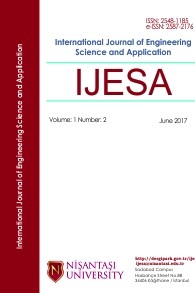Power Factor Control in Buildings by Air Conditioners with Built-in Active Filters
Power Factor Control in Buildings by Air Conditioners with Built-in Active Filters
Air Conditioning Active Filter,
___
- REFERENCES[1] IEEJ, Power Capacitor and Electric Power Quality Improvement Technology Research Expert Committee Edition: “Power Capacitor and Electric Power Quality Improvement Technology” , Electric Institute Technical Data. No. 1320, pp. 12-19 (2014)[2] S. Bhattacharya, T. M. Frank, D. M. Divan, and B. Banerjec: “Active filter system implementation” , IEEE Ind. Appl. Mag. Vol. 4, No. 5, pp 47-63 (1998)[3] B. Singh, K. AL-Haddad, and A. Chandra: “A review of active filters for power quality improvement” ,IEEE Trans. Ind. Electron. Vol. 46, No. 5, pp. 960-971 (1999).[4] H. Akagi: “New trends in active filters for power conditioning” ,IEEE Trans. Ind. Appl. Vol. 32, No. 6, pp. 1312-1322 (1996)[5] J. Allmeling: “A Control Structure for Fast Harmonics Compensation in Active Filter” , IEEE Trans. Ind. Electron. Vol. 19, No. 2, pp. 508-514 (2004).[6] A.Chandra, B.Singh, B.N.Singh, and K.AL-Hadad: “An improved control algorithm of shunt active filter for voltage regulation, harmonic elimination, power-factor correction, and balancing of nonlinear loads” , IEEE Trans. Ind. Electron. Vol. 15, No. 3, pp. 495-507 (2000)[7] Dur Muhammad Soomro, Soo Chin Chong, Zubair Ahmed Memon, Mohammad Aslam Uqaili, Farhan Abbasi “Performance of Shunt Active Power Filter Based on Instantaneous Reactive Power Control Theory for Single-Phase System” , International Journal of Renewable Energy Research (IJRER), Vol 7, No 4 (2017)[8] Adel Elgammal, David Ali, “Self-Regulating Active Power Filter Compensation Scheme for Hybrid Photovoltaic-Fuel Cell Renewable Energy System for Smart Grid Applications” , International Journal of Renewable Energy Research (IJRER), Vol 7, No 2(2017)[9] RUDRANARAYAN SENAPATI, “Study and Analysis of Performance of 3-Phase Shunt Active Filter in Grid-tied PV-Fuel Cell System Employing Sinusoidal Current Control Strategy” , International Journal of Renewable Energy Research (IJRER), Vol 8, No 1(2018)[10] Chenni Rachid, Bouzelata Yahia, Djeghloud Hind,” Application of an Active Power Filter on Photovoltaic Power Generation System” , International Journal of Renewable Energy Research (IJRER), Vol 2, No 4(2012)[11] yousfi abdelkader, Tayeb Allaoui, Chaker Abdelkader, ”Power Quality Improvement Based on Five-Level Shunt APF Using Sliding Mode Control Scheme Connected to a Photovoltaic” , International Journal of Smart Grid (ijSmartGrid)[12] C.Jin, Y.Tang, P.Wang, X.Liu,D.Zhu, and F.Blaabjerg:”Reduction of dc-link capacitance for three-phase three-wire shunt active power filters”,IEEE IECOM 2013,pp1203-1208(2013)[13] T.Mannen, H.Fujita, K.Akiyama, T.Toyota, and Y.Nakashima:”Dynamic Control and Analysis of Dc-Capacitor Voltage Fluctuations in Three-Phase Active Power Filters” ,IEEJ Trans IA, Vol.135, No.6, pp719-725(2015)
- ISSN: 2548-1185
- Başlangıç: 2016
- Yayıncı: Nişantaşı Üniversitesi
Cryptographic Defence With Embedded Audio Based on Bernoulli Numbers
Erhuvwuvoke EBOJOH, John Ajokpaoghene AKPOBİ
Review of Biomass Gasification Technologies and Models: Guidelines for the Ghanaian Situation
Power Factor Control in Buildings by Air Conditioners with Built-in Active Filters
